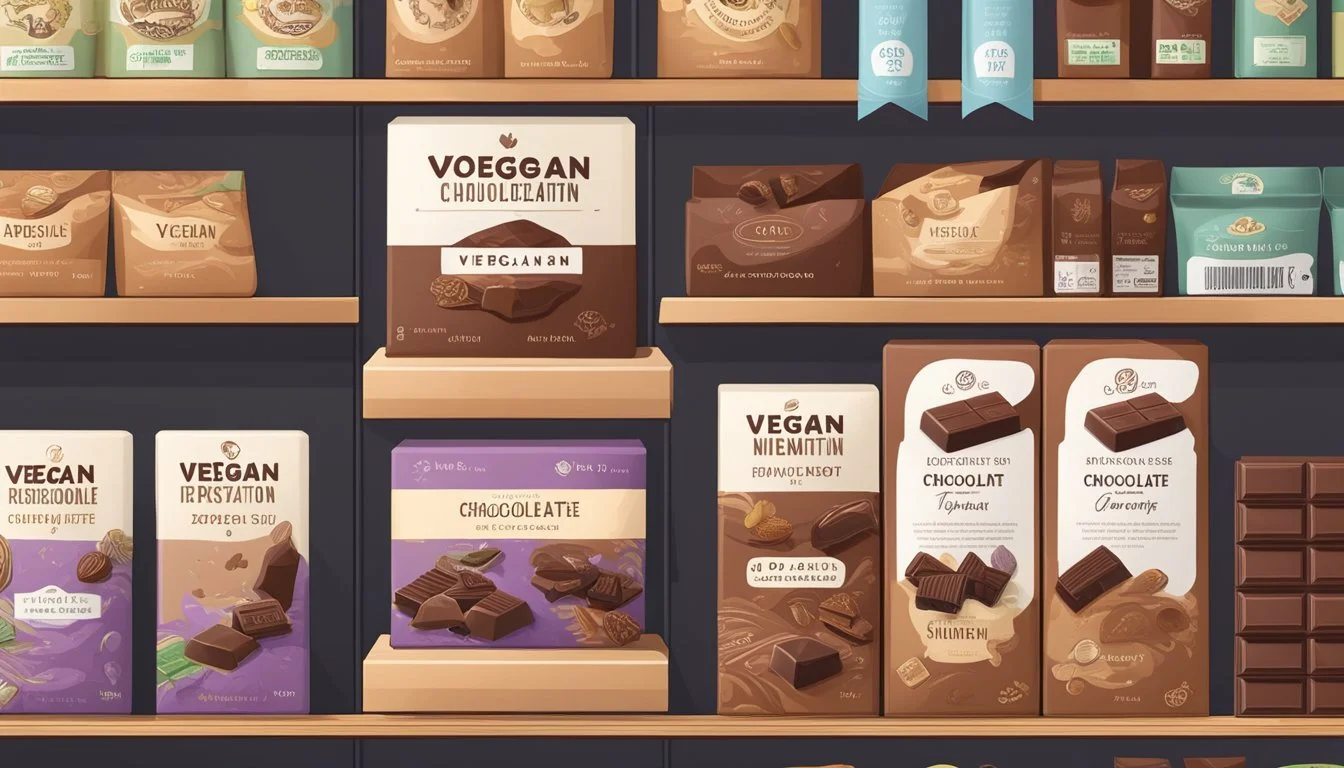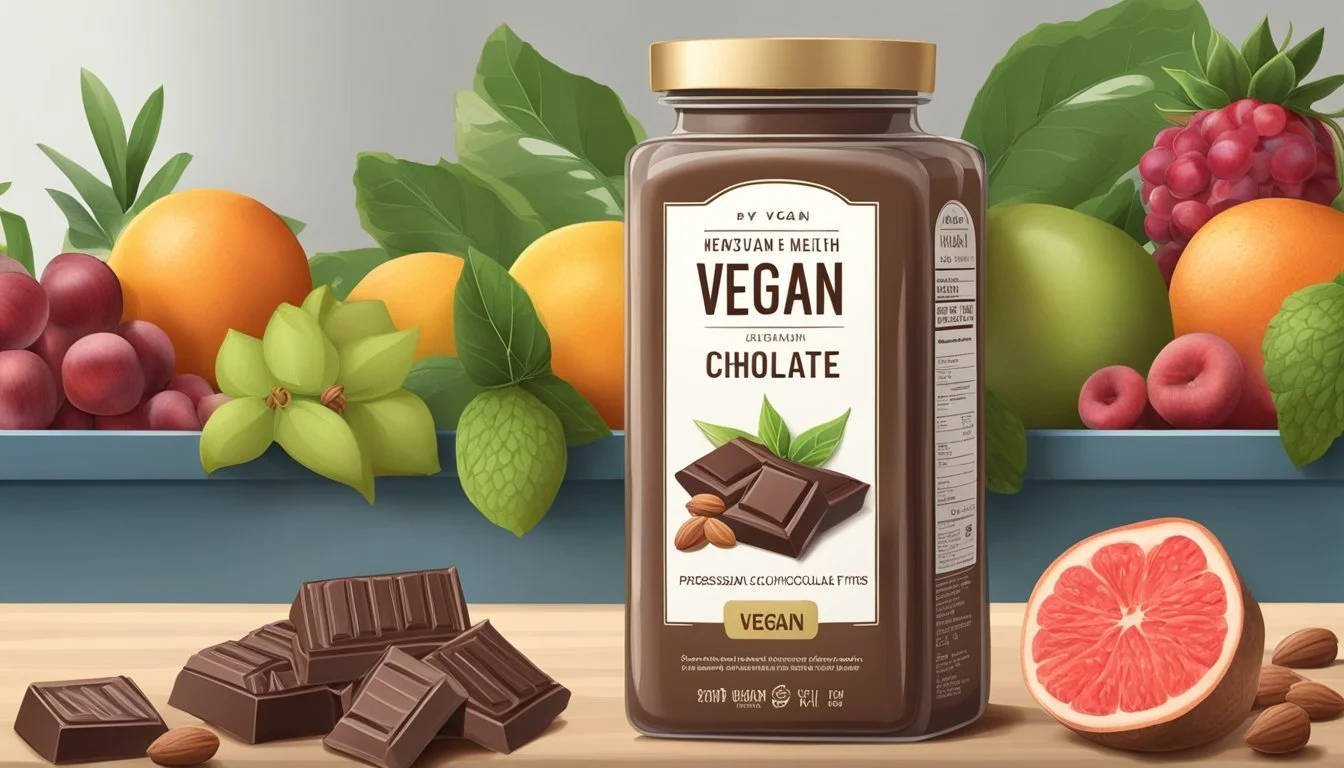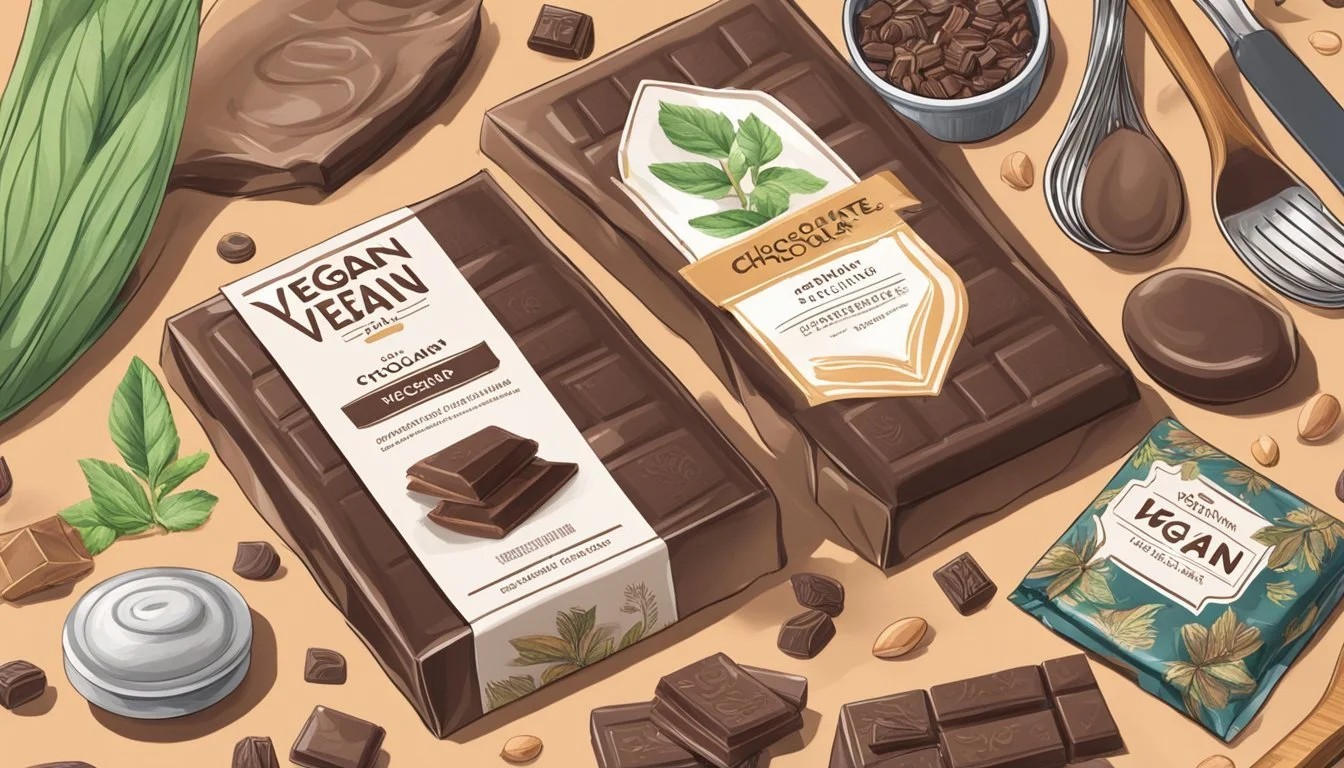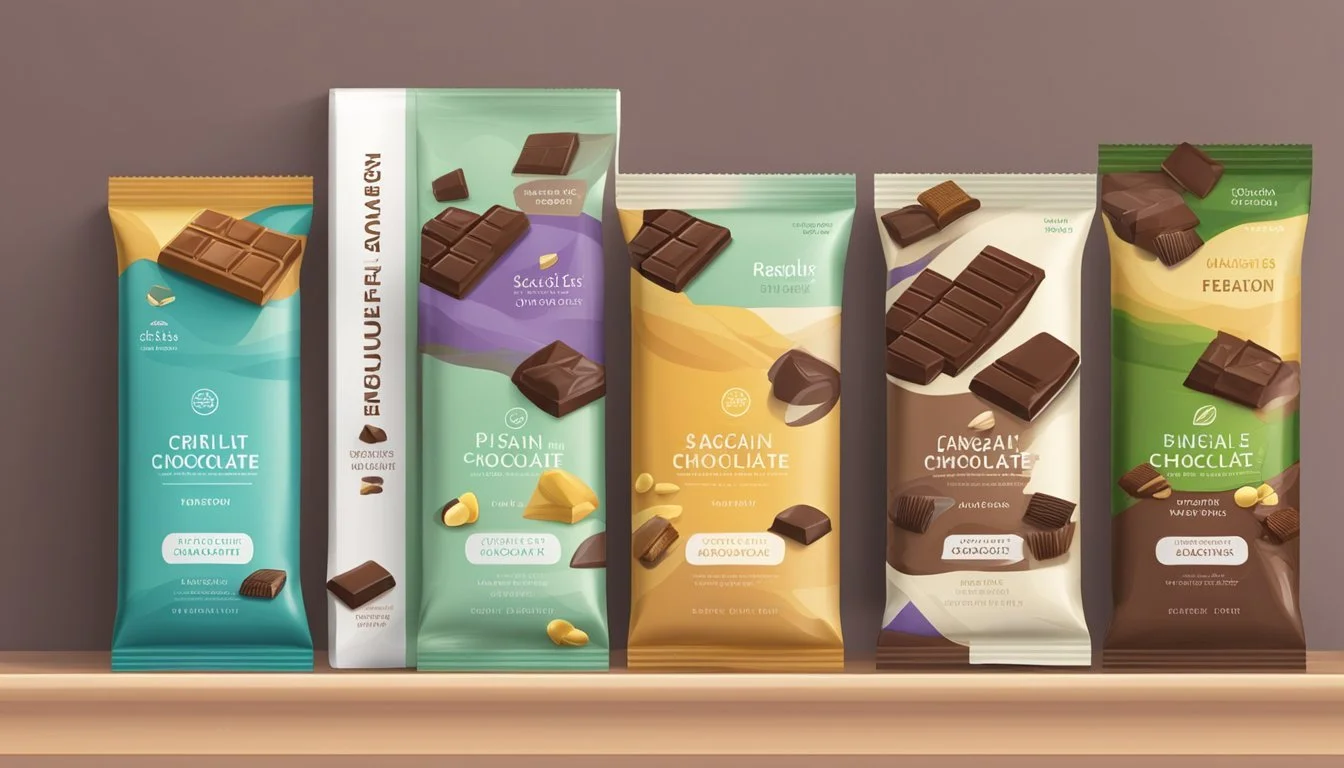Does Vegan Chocolate Go Bad?
Storage Tips and Shelf Life
Vegan chocolate, like any other food product, does have a shelf life. The stability and longevity of vegan chocolate depend largely on its ingredients and storage conditions. Typically, vegan chocolate can last anywhere from six months to two years, especially if it's stored in a cool, dry place.
The absence of dairy in vegan chocolate often gives it a longer shelf life compared to its milk-based counterparts. This is due to the fact that dairy can spoil quicker than plant-based ingredients. Ensuring proper storage, such as keeping the chocolate away from direct sunlight and humidity, is key to maintaining its quality.
For those following plant-based diets, vegan chocolate is an excellent choice that aligns with their dietary preferences without compromising on taste. Knowing how to store it effectively can ensure that their indulgent treats remain fresh and delightful for a longer period.
Understanding Vegan Chocolate
Vegan chocolate excludes all animal products and relies on plant-based ingredients. This section explores the essential aspects of vegan chocolate, highlighting what sets it apart from traditional varieties.
Defining Vegan Chocolate
Vegan chocolate is free from any animal derivatives. Unlike some traditional chocolates, it does not contain ingredients like milk or dairy butter. It is made primarily from cocoa beans, which are fermented, dried, roasted, and ground to produce cocoa mass. This mass can be separated into cocoa powder and cocoa butter, neither of which includes animal products. Vegan chocolate is enjoyed by those who prefer plant-based diets.
Key Ingredients in Vegan Chocolate
The main ingredient in vegan chocolate is cocoa beans. These beans are processed to create cocoa mass, cocoa powder, and cocoa butter. Other common ingredients include sweeteners such as sugar or maple sugar, and sometimes vanilla extract. Plant-based milks like soy, coconut, and almond milk can replace dairy milk to create dairy-free versions of milk chocolate. Nuts, dried fruits, and other plant-based additions can also be found in various vegan chocolate products.
Key Ingredients:
Cocoa beans (cocoa mass, cocoa powder, cocoa butter)
Plant-based sweeteners (sugar, maple sugar)
Plant-based milk (soy, coconut, almond)
Natural flavorings (vanilla extract)
Additives (nuts, dried fruits)
Types of Vegan Chocolate
Vegan chocolate comes in several forms, each with distinct characteristics. Dark chocolate is the most common, known for its rich flavor and high cocoa content. Milk chocolate variants use plant-based milks instead of dairy, offering a similar creamy texture. White chocolate, which traditionally contains cocoa butter but no cocoa solids, can also be made vegan by excluding dairy and using plant-based ingredients. Vegan chocolate can be found with various certifications indicating it meets specific dietary standards, ensuring consumers it contains no animal products.
Types:
Dark Chocolate: High cocoa content, no dairy.
Milk Chocolate: Uses plant-based milk.
White Chocolate: Dairy-free, uses cocoa butter and plant-based ingredients.
These types cater to different tastes and dietary needs, expanding the accessibility and enjoyment of chocolate to those following a vegan lifestyle.
Quality and Composition
Vegan chocolate comes in various forms and compositions. This section delves into the specific aspects of its quality and makeup, including the different cocoa contents, dairy alternatives, and sweetening options used.
Cocoa Content and Types
Cocoa content is crucial in determining the quality of vegan chocolate. The percentage of cocoa affects the taste, texture, and even shelf life. Cocoa solids and cocoa beans are core ingredients, and higher cocoa percentages typically indicate richer flavors and better antioxidant content.
Vegan chocolates often include varieties like cocoa powder and unroasted cacao. Some premium brands offer single-origin chocolates, which highlight specific flavors from distinct regions. Bars with 70% cocoa or higher are popular for their complex taste profiles and health benefits.
Alternative Dairy Ingredients
Common dairy substitutes in vegan chocolate include almond milk, coconut milk, oat milk, and rice milk. Each brings a unique texture and flavor. Almond milk offers a mild, nutty taste while coconut milk adds a creamy and slightly sweet profile.
Oat milk is favored for its smooth, creamy consistency without overpowering flavors. Rice milk, although less rich, is often used for its neutral taste and hypoallergenic properties. These alternatives are carefully chosen to achieve a balance of flavor and texture comparable to traditional dairy chocolate.
Sweeteners and Flavor Enhancers
Sweeteners in vegan chocolate range widely from refined sugar to natural options like coconut sugar. Coconut sugar is popular for its lower glycemic index and caramel-like flavor. Maple syrup and stevia are also used to achieve sweetness without adding refined sugar.
Vanilla extract, sea salt, and other natural flavor enhancers are commonly added to improve the taste. These ingredients not only sweeten but also complement the natural cocoa flavors, enhancing the overall chocolate experience.
Each of these components plays a vital role in ensuring vegan chocolate not only mimics but sometimes even excels compared to dairy-based counterparts.
Shelf Life Factors
The shelf life of vegan chocolate is influenced by its ingredients and how it is stored and preserved. Both factors play crucial roles in determining the longevity and quality of the chocolate.
Impact of Ingredients on Shelf Life
Vegan chocolate can have a varying shelf life depending on the ingredients used. Dark vegan chocolate, which often contains a higher percentage of cocoa and fewer additives, tends to last longer than milk or white vegan chocolate.
The absence of dairy in vegan chocolate can sometimes improve its shelf life, as dairy can spoil quicker than plant-based ingredients.
Higher cocoa content generally means lower moisture levels, which contributes to a longer shelf life. On the other hand, if vegan chocolate contains ingredients like nuts, dried fruits, or other fillings, these can reduce its duration of optimal freshness due to their own expiration tendencies.
Storage and Preservation
Proper storage is essential for extending the shelf life of vegan chocolate. Temperature and humidity are critical factors. Vegan chocolate should be stored in a cool, dry place, ideally between 60-70°F (15-21°C).
Refrigeration is not recommended as it can cause condensation, leading to sugar bloom on the chocolate's surface. Instead, vacuum-sealed packaging can help maintain freshness by reducing exposure to air and moisture.
Using airtight containers can also prevent the absorption of external odors and keep the chocolate tasting as intended. Ensuring these storage practices can significantly prolong the shelf life of vegan chocolate, allowing it to remain both safe and pleasant to consume.
Identifying Spoilage
When vegan chocolate goes bad, signs of spoilage can appear in various forms, including visual and textural changes, as well as alterations in taste. Familiarizing oneself with these indicators can help determine if the chocolate is still safe to consume.
Visual and Textural Changes
Color: Look for changes in color. If the chocolate develops a white or grayish film on its surface, known as "chocolate bloom," it can indicate fat or sugar crystallization. While not harmful, it may affect the texture and flavor.
Texture: Check the texture. Chocolate that has gone bad may become dry, hard, or crumbly instead of having a smooth and creamy texture. Also, any presence of fuzzy, green, or white patches signals mold growth.
Appearance: Be mindful of any unusual appearances such as discoloration or spots. Any visual cues that diverge from the chocolate's original look can signify spoilage.
Taste Alterations
Flavor: Vegan chocolate that has gone bad may exhibit off flavors. If the usual rich, sweet taste is replaced by a bitter or sour note, it may no longer be good to eat.
Aftertaste: Pay attention to any strange aftertaste. Fresh vegan chocolate should leave a pleasant lingering flavor, while spoiled chocolate might taste stale or slightly metallic.
Smell: An off odor can also indicate spoilage. If the chocolate smells musty, sour, or simply different from its typical aroma, it's likely no longer fresh.
These changes can serve as effective indicators of whether your vegan chocolate has passed its prime and should be discarded.
Health and Nutritional Considerations
Vegan chocolate offers various health benefits, especially when it comes to dark chocolate. However, there are also important considerations around potential allergens and cross-contamination.
Benefits of Dark Vegan Chocolate
Dark vegan chocolate stands out due to its high antioxidant content. These antioxidants help in fighting free radicals, substances that can cause cell damage. Additionally, dark chocolate contains fiber and essential minerals like iron, magnesium, and zinc.
Fiber is crucial for digestive health, while magnesium supports muscle and nerve function. Another benefit is its impact on heart health. Cocoa in dark chocolate has been shown to potentially reduce cholesterol levels, improving cardiovascular health.
It's also important to note that vegan chocolate is free from animal-derived products, making it suitable for vegans and those with dairy allergies.
Potential Allergens and Cross-Contamination
Despite its benefits, vegan chocolate can still pose risks due to potential allergens. Nuts, soy, and gluten may be present in some vegan chocolates, which could trigger allergies.
Cross-contamination is another concern. Chocolate production often occurs in facilities that process animal-derived products, risking exposure to non-vegan ingredients. Consumers should check labels for any allergen warnings and verify that the chocolate is made in a dedicated vegan facility.
Vigilance is essential for those with severe allergies or strict dietary requirements to ensure the chocolate they consume meets their health and nutritional needs.
Consumer Guidance
When selecting vegan chocolate, it's important for consumers to be aware of labels and certifications and prioritize high-quality products to ensure the best flavor and safety. Key points include understanding standardized labels and choosing brands known for their quality and ethical practices.
Reading Labels and Certifications
Reading labels is crucial for identifying genuinely vegan chocolate. Consumers should look for vegan certifications, which verify that no animal products or by-products are used. Common certifications include the Vegan Society trademark and Certified Vegan logo.
Organic and Fair Trade certifications are also important. Fair Trade ensures ethical sourcing practices, benefiting farmers and workers. Organic chocolate guarantees the absence of harmful pesticides and synthetic additives. Brands like Equal Exchange and Raaka often highlight these certifications to showcase their commitment to quality and ethics.
Ingredients lists are equally important. Check for common vegan ingredients like cocoa, cocoa butter, and cane sugar. Avoid products containing milk derivatives or gelatin. Brands such as Hu Kitchen emphasize clean labels with minimal and recognizable ingredients, ensuring transparency.
Choosing High-Quality Vegan Chocolate
High-quality vegan chocolate stands apart with its superior taste and texture. Opt for brands known for their premium offerings, such as Hotel Chocolat and Raaka. These manufacturers often use high-grade cocoa and traditional processing methods.
Texture is a key indicator of quality. Smooth, creamy textures without grittiness are preferable. This quality can often be found in bars that use cocoa butter instead of substitute fats. Brands like Hu Kitchen pride themselves on creating products without artificial additives, resulting in a better mouthfeel.
Ethical considerations are also relevant. Companies committed to fair trade practices, such as Equal Exchange, not only produce high-quality chocolate but also support sustainable and ethical farming. This ensures that the product is both delicious and responsibly sourced.
Choosing vegan chocolate with these guidelines helps consumers enjoy a richer, healthier, and more ethically produced treat.
Culinary Applications
Vegan chocolate offers a variety of uses in the culinary world, from enhancing baked goods to creating delicious homemade treats. Its versatility ensures it's a staple in many vegan and non-vegan kitchens alike.
Baking and Cooking with Vegan Chocolate
Vegan chocolate can be utilized in numerous baking and cooking applications. Chocolate chips or baking chocolate can be used to make classic cookies, brownies, and cakes. Vegan chocolate bars, chopped into chunks, add a rich flavor to any dessert.
For cooking, vegan chocolate can be melted and used in sauces, such as for a vegan mole, providing a depth of flavor. While it is important to note that some vegan chocolates may have a slightly different texture due to the absence of dairy, they still offer a creamy and enjoyable experience.
Homemade Vegan Chocolate Recipes
Creating homemade vegan chocolate recipes can be a rewarding culinary adventure. Vegan truffles are a popular choice, combining melted vegan chocolate with coconut milk and coating in cocoa powder or nuts. For a simple treat, homemade vegan chocolate bars can be made by melting cocoa butter with cocoa powder and a sweetener like agave or maple syrup.
Recipe collections can include vegan chocolate mousses, utilizing avocados or silken tofu as a base. Additionally, chocolate-covered fruit makes for a healthy yet indulgent snack. Both novice and experienced cooks can find joy and satisfaction in creating these delicious vegan chocolate recipes.
Brands and Varieties
Vegan chocolate is available in numerous brands and varieties, catering to different tastes and quality preferences. This section highlights both popular brands and specialty selections that stand out in the vegan market.
Popular Vegan Chocolate Brands
Several well-known brands offer high-quality vegan chocolate. Theo Chocolate is a notable brand, offering a range of dark and milk chocolate varieties. Their products are fair trade and organic, ensuring ethical sourcing.
Hu Kitchen is another popular choice, known for its dark chocolate bars that avoid refined sugar, dairy, and gluten. The purity and taste make it a favorite among health-conscious consumers.
Vego produces delicious and creamy vegan chocolate bars, often incorporating whole hazelnuts to provide both flavor and texture.
Cadbury has also ventured into the vegan market with its plant-based chocolate bars, providing a familiar taste without the dairy.
Specialty and Artisan Selections
Specialty vegan chocolate brands offer unique flavors and ethical practices. Raaka specializes in unroasted dark chocolate, providing a distinct and rich flavor. Their bean-to-bar production emphasizes sustainability and transparency.
Hotel Chocolat offers a selection of vegan chocolates, ranging from simple dark bars to elaborate truffle collections, ensuring luxury and variety.
Lovo Chocolate emphasizes plant-based ingredients and innovative flavors, such as almond, coconut, and hazelnut milk chocolates. Their eco-friendly packaging also appeals to environmentally conscious consumers.
Additionally, artisan brands like Beyond Good and Divine offer single-origin chocolates that highlight the unique flavors of cacao from different regions, supporting ethical trade practices.
These brands and varieties demonstrate the diversity and quality available in the vegan chocolate market, providing tasty options for all preferences.










